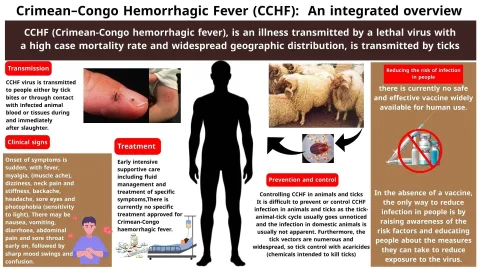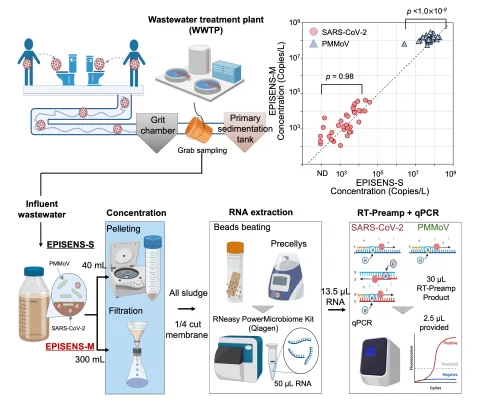Adherence to Tamiflu guidelines is crucial in ensuring the effective treatment of influenza in children, yet recent findings reveal a significant gap in practice among pediatric clinicians. Research conducted across seven children’s hospitals shows that many healthcare providers fail to recommend oseltamivir treatment in line with established protocols, particularly when symptoms persist beyond a few days. For instance, only 30.9% of clinicians proposed antiviral therapy for a patient with just two days of symptoms, whereas the recommendation plummeted to 1.8% when symptoms lasted for four days. Adhering to the American Academy of Pediatrics (AAP) and CDC guidelines, which advocate for the timely administration of antiviral treatments in at-risk children, is essential to improve outcomes. Failure to follow influenza antiviral recommendations not only affects individual patient care but could also lead to increased hospitalizations and complications in the pediatric population.
The noncompliance with Tamiflu prescribing protocols reflects a broader issue in pediatric flu treatment practices. Clinicians often overlook the importance of early intervention with antiviral medications like oseltamivir, particularly for children who are at heightened risk for severe complications. Understanding how to effectively implement influenza antiviral recommendations can drastically affect patient outcomes, ensuring that children receive the necessary care during their illness. As discussions around oseltamivir treatment in children continue, it’s vital for healthcare professionals to stay informed about the latest guidelines and recommendations to promote proper antiviral prescribing practices. By bridging the gap between clinical guidelines and real-world applications, we can enhance the treatment framework for pediatric influenza management.
Understanding Tamiflu Pediatric Guidelines
The Tamiflu pediatric guidelines established by the American Academy of Pediatrics (AAP), the Infectious Diseases Society of America (IDSA), and the Centers for Disease Control and Prevention (CDC) emphasize the importance of prompt antiviral treatment within the first 2 days of influenza symptoms. These guidelines also stipulate that children at higher risk for severe flu complications should receive oseltamivir regardless of symptom duration, ensuring timely intervention. It is critical for clinicians to familiarize themselves with these recommendations to optimize pediatric flu treatment and improve overall patient outcomes.
Recent research has highlighted a significant gap in adherence to these guidelines within outpatient settings. Clinicians often defer antiviral treatment when symptoms have persisted for more than a few days, overlooking the necessity for early intervention. By understanding the nuances of Tamiflu pediatric guidelines, healthcare professionals can enhance their antiviral prescribing practices, thereby reducing the chances of severe influenza cases among children.
Oseltamivir Treatment in Children: Current Trends
Oseltamivir, commonly known as Tamiflu, is widely recommended for children experiencing influenza symptoms, especially in cases where the duration does not exceed 48 hours. A critical analysis of clinician practices reveals that only a small percentage recommend Tamiflu when symptoms persist beyond the recommended timeframe, contradicting current influenza antiviral recommendations. With appropriate awareness, more clinicians could align their prescribing behaviors with the scientific evidence supporting oseltamivir’s efficacy in pediatric flu treatment.
The reluctance to prescribe oseltamivir after a specific symptom duration reflects broader concerns about antiviral effectiveness and treatment protocols. Children with certain health conditions, such as asthma or other chronic illnesses, are at greater risk; hence, timely treatment should not be delayed. Emphasizing education around the benefits of oseltamivir treatment can enable physicians to make informed decisions, ultimately preventing complications associated with influenza in pediatric patients.
Influenza Antiviral Recommendations: Importance of Early Intervention
Research underscores the crucial role of early intervention in managing influenza in children. Antiviral recommendations clearly state that treatments like Tamiflu should be initiated as soon as flu symptoms appear, especially for high-risk populations. When clinicians adhere to these recommendations, they can significantly mitigate the impacts of influenza, reducing hospitalizations and severe complications that arise from delayed treatment.
However, the study findings illustrate a prevalent trend where cliinicians hesitate to prescribe oseltamivir based on symptom duration, aligning their practices with outdated perceptions rather than evidence-based guidelines. Therefore, it is vital for healthcare providers to revisit and adhere to current antiviral recommendations, reinforcing the understanding that timely treatment is essential for preventing serious flu-related outcomes in children.
Barriers to Adhering to Tamiflu Guidelines
Despite the clear Tamiflu guidelines, numerous barriers hinder adherence among pediatric clinicians. One of the significant obstacles includes a lack of awareness or misunderstanding of existing guidelines, especially concerning treatment requirements for high-risk patients. Clinicians may feel overwhelmed by the nuances of flu presentations and the fluctuating nature of symptoms, leading to hesitation in prescribing timely antiviral treatments.
Another critical barrier is the variability in clinical practice settings. In pediatric hospitals, clinicians often encounter different protocols and pressures that may affect their prescribing habits. Addressing these barriers through continued education, guideline dissemination, and discussion among healthcare professionals can foster a culture of adherence to the best practices in pediatric flu treatment.
Enhancing Antiviral Prescribing Practices
To improve antiviral prescribing practices for pediatric patients, healthcare systems must implement systematic changes that prioritize the adherence to recommended guidelines. Training programs focused on Tamiflu pediatric dosing and administration strategies can equip clinicians with the necessary knowledge to make informed decisions when treating influenza in children. Furthermore, integrating clinical decision support systems within electronic health records can promote timely antiviral prescribing aligned with guideline recommendations.
Peer-to-peer discussions and case reviews can also serve as platforms for clinicians to voice concerns and share experiences regarding antiviral treatment. By creating a supportive environment that values guideline adherence, healthcare providers will feel more empowered to prescribe oseltamivir appropriately and effectively, thus improving overall health outcomes for children suffering from influenza.
Clinical Implications of Nonadherence to Tamiflu Guidelines
The clinical implications of nonadherence to Tamiflu guidelines are significant and concerning. Failure to provide early antiviral treatment for pediatric patients with influenza can lead to increased rates of hospitalizations and complications such as pneumonia, dehydration, and prolonged illness. Children, particularly those in high-risk categories, require timely treatment to minimize these risks and enhance recovery.
Additionally, nonadherence can strain healthcare systems as a rise in severe cases may result in more extensive healthcare needs, increasing the burden on pediatric resources. Thus, it is critical for healthcare providers to recognize the importance of following Tamiflu guidelines closely and to ensure that all children receive the necessary antiviral treatments promptly.
The Role of Education in Tamiflu Prescribing
Education plays a vital role in ensuring adherence to Tamiflu guidelines among pediatric clinicians. Continuous medical education programs focusing on the latest research about oseltamivir’s effectiveness, its indication for children, and recommendations can bridge the gap between knowledge and practice. Regular updates about clinical guidelines and emerging studies should be circulated to all healthcare providers working with pediatric populations.
Moreover, bringing together pediatricians, pharmacists, and infectious disease specialists to discuss the importance of antiviral treatment can enhance understanding and compliance with Tamiflu guidelines. Education should transcend formal settings and include informal continuous learning through case discussions, workshops, and collaborative practice, ultimately fostering a culture of excellence in pediatric care.
Pediatric Flu Treatment Strategies: Best Practices
When managing pediatric flu cases, employing best practices derived from Tamiflu guidelines is essential. These strategies emphasize early intervention, particularly for children presenting with symptoms for less than 48 hours, as studies highlight the effectiveness of oseltamivir when administered promptly. Such proactive approaches can significantly reduce the duration of illness and prevent severe complications, making them indispensable in pediatric care.
In addition to pharmacological treatment, education on flu prevention strategies should be part of the outpatient care plan for children. Parents should be informed about vaccination, proper hygiene practices, and early signs of influenza to ensure they act swiftly in seeking medical advice when symptoms arise. Integrating these best practices into a comprehensive strategy can enhance the overall effectiveness of pediatric flu management.
The Future of Influenza Management in Pediatrics
The future of influenza management in pediatric care will likely involve advancements in antiviral treatments and better adherence to existing guidelines like those for Tamiflu. With ongoing research into more effective antiviral medications and the development of rapid diagnostic tests, clinicians may have the tools needed to enhance decision-making processes significantly. Moreover, the focus on evidence-based medicine will likely cultivate an environment where adherence to treatment guidelines becomes second nature.
As we look forward, it’s essential to foster collaborations between healthcare professionals, researchers, and public health institutions to streamline the management of influenza in children. Such initiatives can not only improve adherence to antiviral recommendations but also promote innovative strategies that ensure the health and safety of pediatric populations during flu season.
Frequently Asked Questions
What are the Tamiflu pediatric guidelines for treating influenza in children?
The Tamiflu pediatric guidelines recommend that oseltamivir (Tamiflu) be administered to children diagnosed with influenza, particularly if they exhibit symptoms for less than 48 hours. For high-risk pediatric patients, treatment should begin as soon as flu symptoms are detected, irrespective of the duration of the illness. Adhering to these antiviral recommendations is crucial to prevent severe complications.
Why is adherence to Tamiflu guidelines important for pediatric flu treatment?
Adherence to Tamiflu guidelines is vital for pediatric flu treatment because early administration of oseltamivir can significantly reduce the duration of influenza symptoms and the risk of complications, particularly in high-risk children. The American Academy of Pediatrics (AAP) and the CDC emphasize timely antiviral prescribing practices to improve outcomes for pediatric patients.
How do clinicians’ prescribing practices compare to Tamiflu guidelines adherence?
Recent studies indicate that many clinicians show considerable nonadherence to Tamiflu guidelines. For instance, while the AAP and CDC recommend oseltamivir for symptomatic children within 48 hours, many clinicians are hesitant to prescribe it when symptoms have lasted longer than 3 or 4 days, indicating a gap in adherence to established guidelines.
What barriers exist that affect Tamiflu guidelines adherence in pediatric hospitals?
Barriers to Tamiflu guidelines adherence in pediatric hospitals may include misconceptions about the timing of treatment effectiveness, fear of side effects, and insufficient understanding of the importance of early antiviral treatment for high-risk children. Identifying these barriers is essential for improving prescribing practices.
What recommendations do the AAP, CDC, and IDSA provide for antiviral treatment in children?
The AAP, CDC, and IDSA recommend that all children at risk for severe influenza receive oseltamivir (Tamiflu) as soon as symptoms appear, ideally within two days of onset. This guideline is based on evidence demonstrating that timely antiviral treatment can alleviate symptoms and reduce hospitalization rates.
When should Tamiflu be prescribed to at-risk children with influenza?
Tamiflu should be prescribed to at-risk children with influenza as soon as symptoms develop, regardless of how long they have had symptoms. Clinicians are urged to adhere to Tamiflu guidelines adherence to ensure high-risk pediatric patients receive timely and appropriate antiviral treatment.
| Key Point | Details |
|---|---|
| Study Overview | A study published in pediatrics found that clinicians often do not adhere to Tamiflu guidelines in treating children with influenza. |
| Study Duration & Participants | Conducted from March to June 2024 at seven children’s hospitals with 452 pediatric clinicians involved. |
| Inclusion of Clinical Vignettes | Clinicians assessed vignettes with varying durations of symptoms, three of which warranted Tamiflu treatment. |
| Treatment Recommendation Frequency | Only 30.9% recommended treatment for symptoms lasting 2 days; 1.8% for 4 days. |
| Specific Case Findings | The vignette of a healthy 6-year-old with fever and myalgias on day 4 had only 1.8% recommendations for treatment. |
| High-Risk Consideration | AAP, IDSA, and CDC recommend all at-risk children should receive Tamiflu regardless of symptom duration if symptomatic. |
| Conclusion by Experts | Expert commentary highlighted the need for studies on improving treatment adherence and understanding barriers to timely antiviral treatment. |
Summary
Tamiflu guidelines adherence is crucial for effective treatment of influenza in pediatric patients. Despite clear recommendations from leading health organizations, a significant number of clinicians do not follow these guidelines, particularly when symptoms persist beyond a few days. Adhering to these guidelines ensures that at-risk children are treated promptly, potentially reducing complications associated with severe influenza. Continuous education and awareness are pivotal in improving adherence rates among healthcare providers.
The content provided on this blog (e.g., symptom descriptions, health tips, or general advice) is for informational purposes only and is not a substitute for professional medical advice, diagnosis, or treatment. Always seek the guidance of your physician or other qualified healthcare provider with any questions you may have regarding a medical condition. Never disregard professional medical advice or delay seeking it because of something you have read on this website. If you believe you may have a medical emergency, call your doctor or emergency services immediately. Reliance on any information provided by this blog is solely at your own risk.








